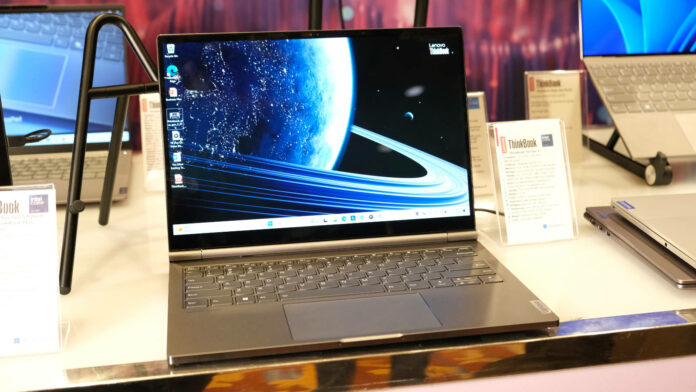One of the more innovative products at CES 2024 is the Lenovo ThinkBook Plus Gen 5 Hybrid. The name might be a mouthful, but there’s no denying the intrinsic merit of a Windows- and Android-based laptop that promises the best of both worlds.
In regular form, the $1,999 laptop houses an Intel Meteor Lake Core Ultra 7 rocking a baked-in Arc GPU, 32GB LPDDR5x memory, a 1TB PCIe NVMe SSD, dual Thunderbolt 4 ports, and a touch-sensitive 14in 2.8K OLED screen offering 100% of the DCI-P3 spec. Nothing too novel about that.
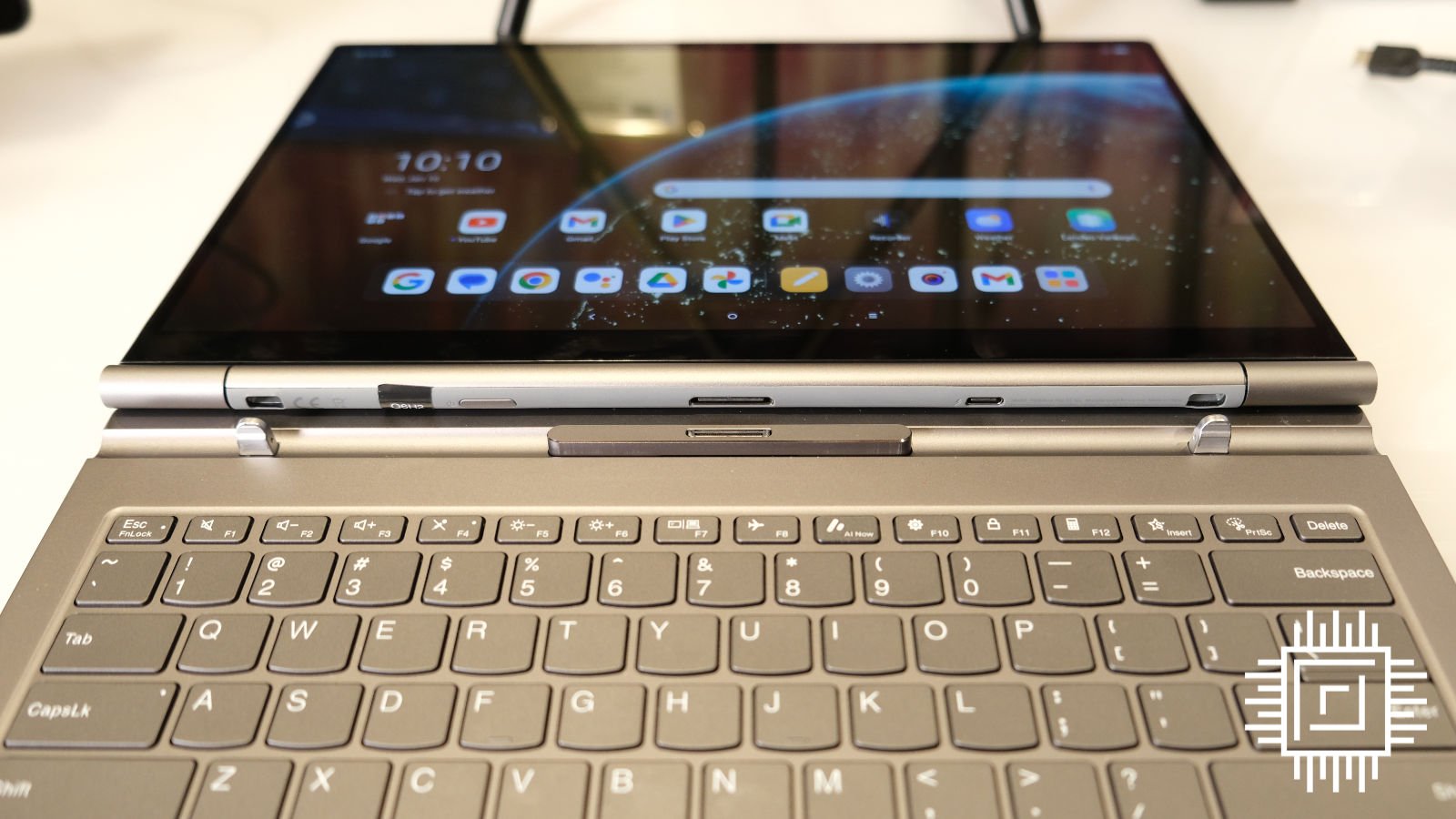
The magic happens when you pull the high-resolution screen away from the body with a tug. Becoming a fully-fledged Android 13 tablet powered a Qualcomm Snapdragon8+ Gen 1 chip featuring Adreno Graphics, there’s also 12GB of local LPDDR5x memory and 256GB of storage. The switch between Windows and Android, meanwhile, takes in the region of two seconds – not enough, in my opinion, for it to become a distraction.
Furthermore, the tablet is a fully standalone affair, offering a 38Wh battery, an infrared front camera, rear 13MP snapper, and USB-C for charging. Making the most the lusty screen, Lenovo bundles in a pen. The tablet weights a manageable 785g, and I had no problem in holding it in one hand.
That said, there remains a wireless link between the two sections such that, when apart, the base still acts as a keyboard for the tablet and it, in turn, can access files on the main ‘computer’ base.
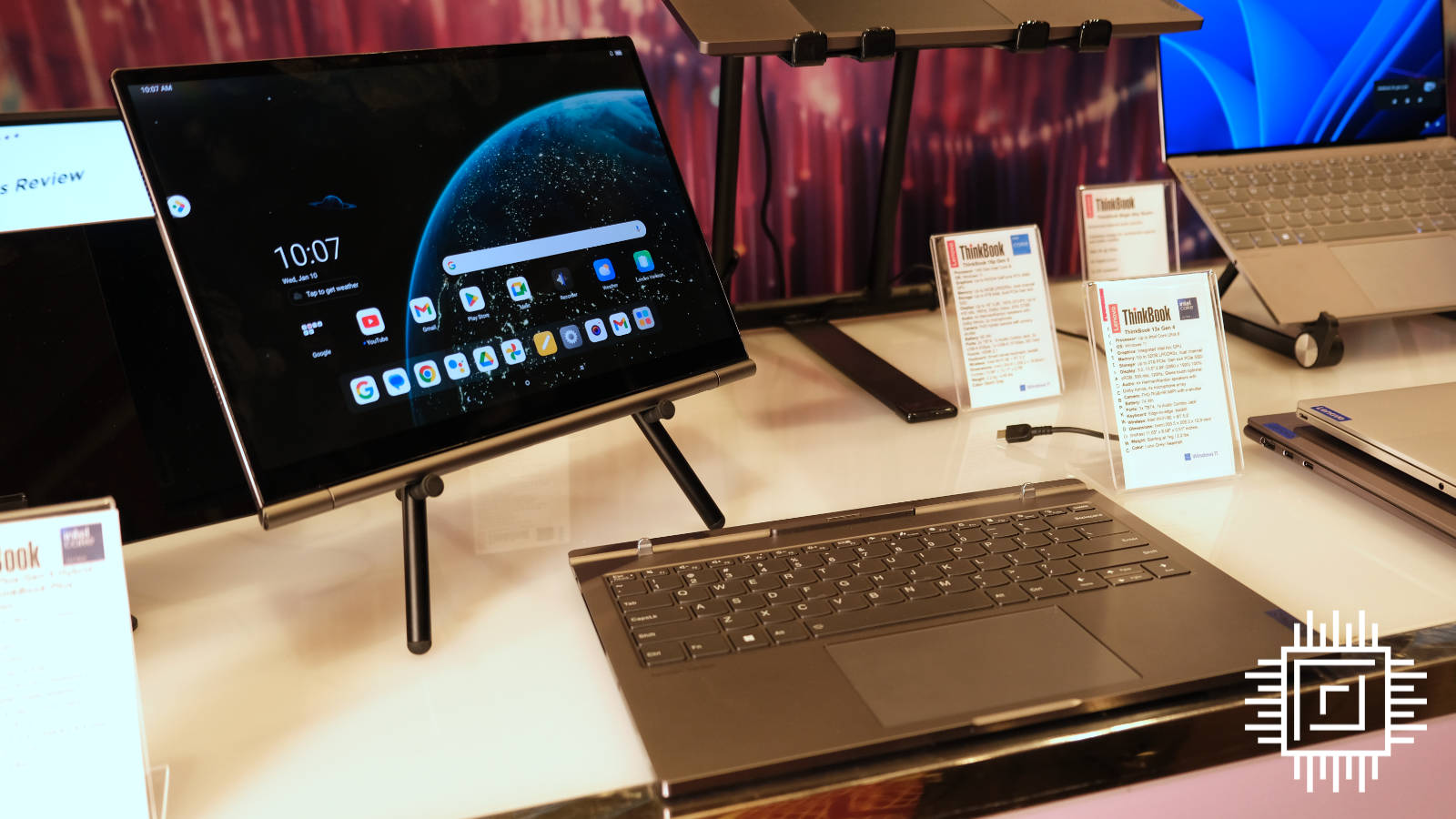
Have it your way
At only 6.6mm thick, the tablet portion closely resembles an iPad Pro, and using common apps reveals a speedy and responsive experience. The four speakers are surprisingly robust, too.
The OLED screen, in particular, is a highlight, bringing the expected punchy colours and perfect blacks. Though the sample I used isn’t absolutely final, build quality is up to Lenovo’s usual high standards.
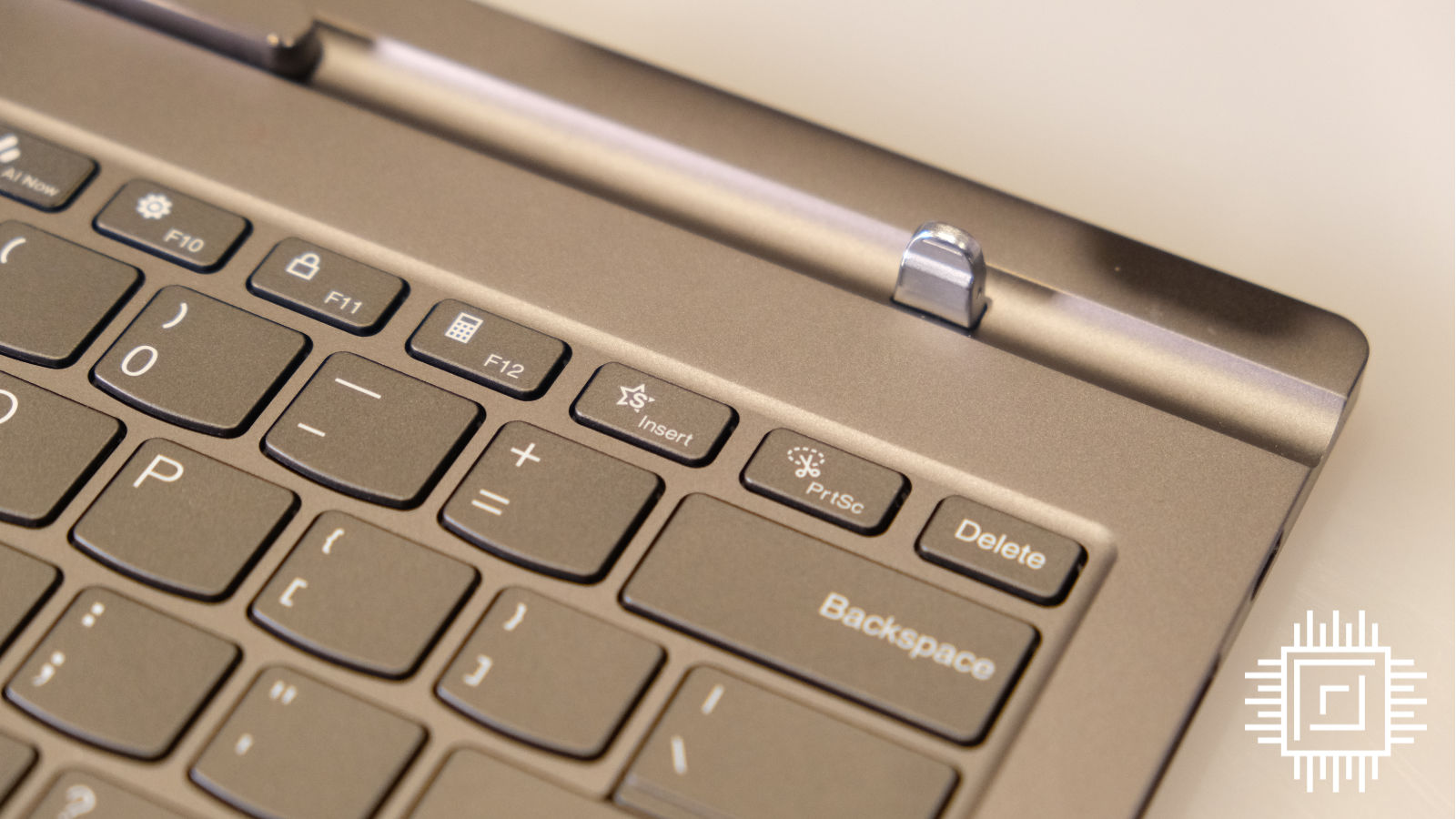
When docked, the tablet hinges back to present a flat workspace. The default operating system is Windows 11, though you can manually switch to Android by pressing the star key shown third in from right. Again, the transition takes around two seconds and is consistent every time you press it to flit between the two OSes.
The base carries a much larger 75Wh battery that is able to charge the docked tablet, though you cannot charge from tablet to base. Weighing 970g on its own, it feels heavier than it perhaps should, but part of that heft is attributable to that chonky battery.
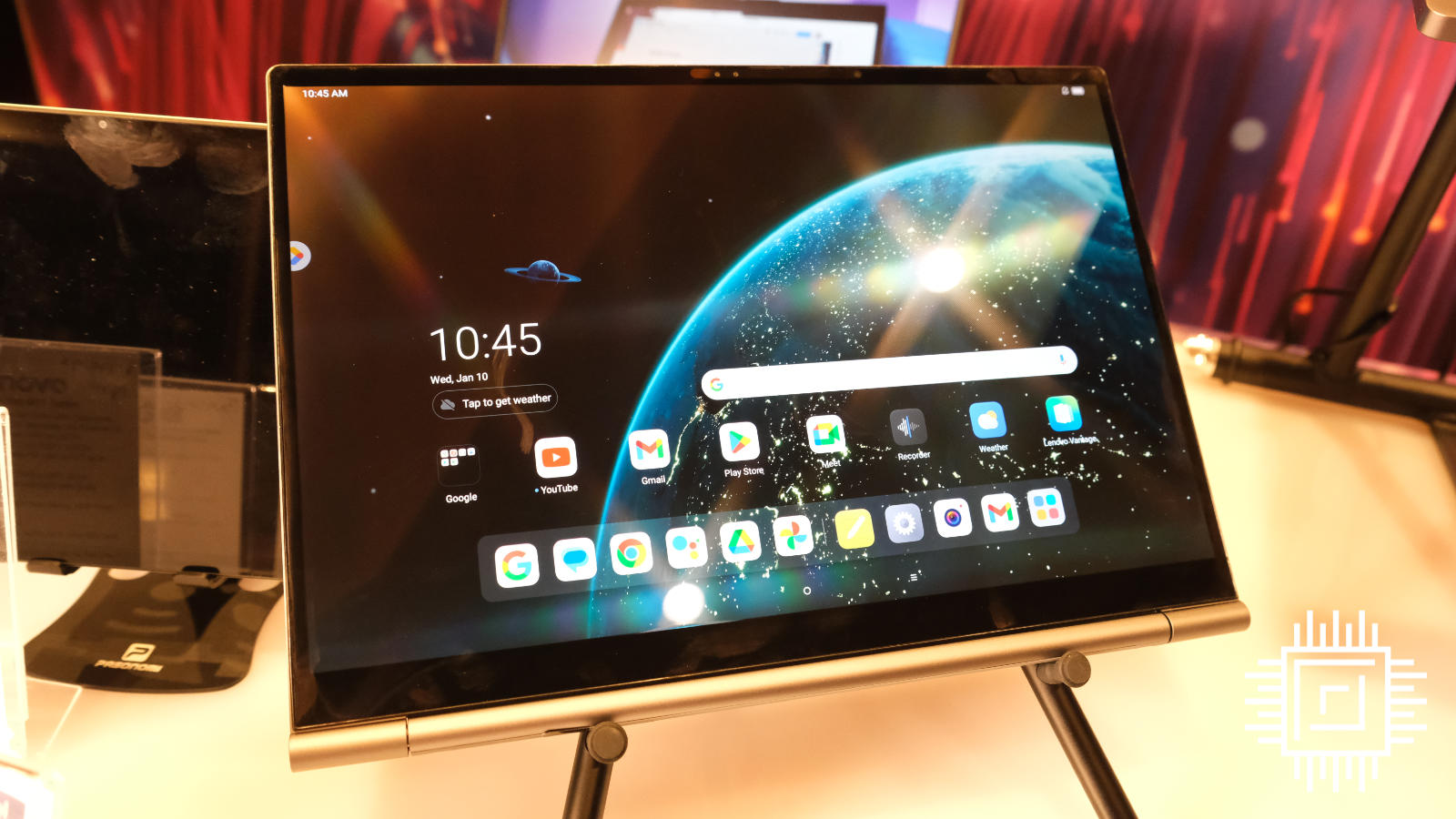
Playing around with the ThinkBook Plus Gen 5 Hybrid at Lenovo’s suite, the 2-in-1 nature is executed well in most regards. We’ll know more once it’s released deeper into Q2 this year, but for now, it’s one of the classier products on show.

